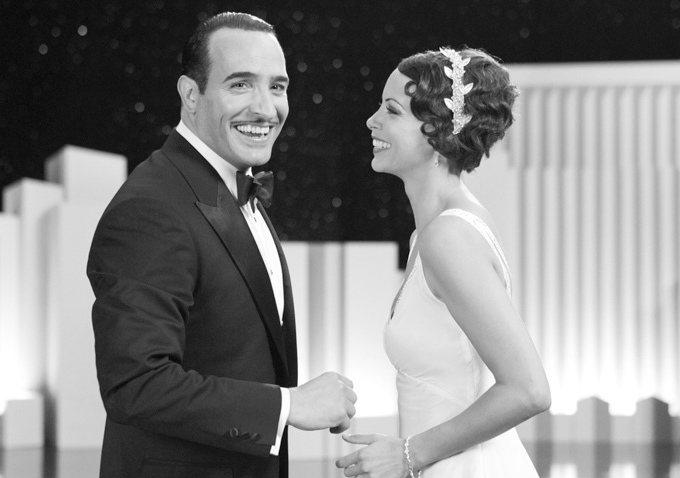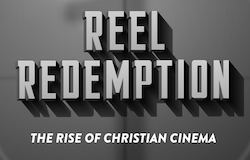The Best of Pictures: The Artist (2011), by Josh Long
3 Apr
THE ARTIST (2011)
Written and Directed by: Michael Hazanavicius
Starring: Jean Dujardin, Berenice Bejo, James Cromwell, John Goodman
Do we remember silent film? There are lots of us cinephiles who have watched many great silents, sometimes out of genuine enjoyment, and other times out of curiosity. But the further we get from the era of Chaplin and Murnau, the less likely it seems that the casual movie-goer has ever seen a silent movie. When Michel Hazanavicius brought the genre back into the limelight with The Artist, audiences revisited their feelings about this long-lost style of filmmaking.
The Artist is actually only the second silent film to win Best Picture. The first and only other was Wings, the winner at the first ever Academy Awards in 1927. Interestingly, the Oscars and sound film emerged at the same time, and by 1928, talkies were on everybody’s mind. 1 Hazanavicius’ film takes place during this very time period. The film’s protagonist is a silent star who is at the top of the world until the industry changes around him. He doesn’t want – or is unable – to adapt to the times, and descends into depression and hopelessness.
There are several layers of interplaying themes here. The obvious one is a study on the ever-changing medium of film, especially in a time where HD, 3D, and digital filmmaking are becoming standard. 2 There are always those left behind, just as there are when another industry follows a technological advance. The question, especially in regards to art, is whether this means that the old ways are obsolete. Are they still worthwhile? Can they still be effective? While I wouldn’t expect a whole-hearted revival of silent film, The Artist answers both questions with a resounding “yes.” It’s a film that knows silent cinema well enough to know the strengths and play them beautifully.
There are two scenes in particular that I love for this reason. The first finds the lead character, George Valentin 3 (for whose portrayal Jean Dujardin won Best Actor), at the movie studio as he runs into an actress who once played opposite him (Berenice Bejo). She is coming to the studio because she’s an up and comer and has just been signed for a new picture. He’s leaving the studio because they’ve told him they don’t have any work for him. They meet on the stairway, and an old flame is rekindled. Besides the visual imagery of Valentin going down the stairs as his “replacement” of sorts goes up, the actors display the full range of emotion in this scene, even though it’s mostly small talk. We see disappointment, excitement, surprise, and we can even tell that they have feelings for each other. None of this is said – it doesn’t have to be. For several seconds, there aren’t even any intertitles, 4 but it’s a joy just watching (and not hearing) them talk.
Another great scene comes later in the film, when Valentin is fading into obscurity while the girl, Peppy Miller, has become an international sensation. By chance they are in the same restaurant, Peppy being interviewed by reporters while George has dinner nearby. When asked about the change to talkies, Peppy decries the melodramatic style and over-the-top acting. While she does, we can see George in the same frame, feeling this insults with a gripping subtlety. The silent performance stands in stark contrast to what Peppy says, and what many have said through the years.
Another theme is fame and its fickleness. Valentin’s whole existence is built on fame, and when he loses it, he loses his identity. His ivory tower turns out to be built on a foundation of sand. People forget him quickly, even though they clamored to see him only a few years earlier. It’s a fascinating reminder that things really did change this quickly in the advent of sound film. Many actors and directors were unable to get work, 5 and others who were more self-made refused to abandon the genre. But artists (and especially those in the popular arts) are always subject to the whims of their audiences, which can change with the wind. 6 For Christian audiences, it’s a poignant reminder that seeking glory in other people’s eyes is “a chasing after the wind.” Fame will pass away with the temporal earth, and here is a reminder that it can easily pass away long before that. It is vitally important that we question where we find out identities.
I’m happy with The Artist winning this year’s Best Picture, but my personal pick for this year’s best film is Tree of Life. Malick’s film is one with a very deep universal message, and one that takes some digging to understand. That said, the Academy (and apparently most viewers) were not necessarily on board with something this obtuse. The Artist celebrates old Hollywood, which is something that the Oscars love to reward. The whole Oscar night ceremony is always an homage to the glitzy golden years of Tinseltown. I do like that the film also has a message about our current time, layered inside a period piece. It seems like The Artist has more to say about our time than, for instance, The King’s Speech did. 7
In my opinion, The Artist is a fine addition to the Oscar history books. It’s a film that celebrates movie history, raises some thought-provoking questions, and is a joy to watch. Even those who have never seen a silent movie should come out with smiles on their faces. Then, they should go out and rent Sunrise.
1. The second film to ever win Best Picture was The Broadway Melody. The film itself is pretty week, but it was a musical, and in a time where sound was novel, musicals (especially as a uniquely American genre) were a big deal.
2. It is serendipitously poetic that a film about the emergence of talkies wins Best Picture the same year that Oscar’s own “Kodak Theatre” is no longer called so – Kodak film being bankrupted by the switch to digital.
3. Maybe a reference to Rudolph Valentino? Can’t verify that one.
4. Intertitles were the cards with words that would appear between dialogue to tell audiences what the actors are saying. But you knew that. Interestingly, Alfred Hitchcock got his start designing intertitle cards.
5. For example, Gloria Swanson and Erich von Stroheim, both who dramatize their own real-life woes in Sunset Boulevard.
6. Some could argue that the end of the film reinforces the idea that fame is what’s important, though it seems the filmmaker would like to suggest that love is more important. It’s true that relationships are what redeem Valentin but – SPOILERS – the ending allows him to have his cake and eat it too.
7. Certainly there are themes in The King’s Speech that apply to viewers in 2010. But these are more universal themes, and less themes that speak specifically to contemporary society.




No comments yet